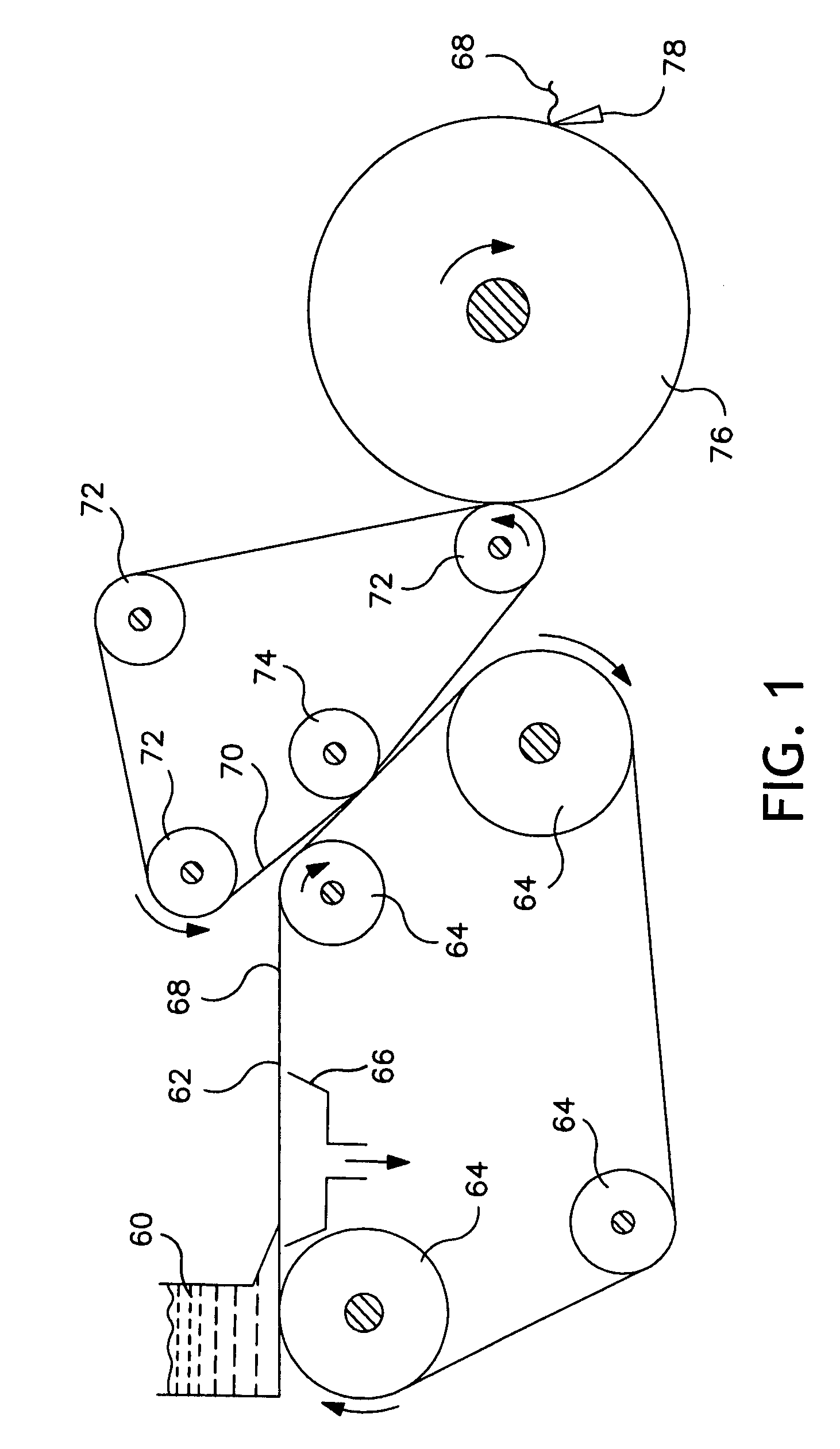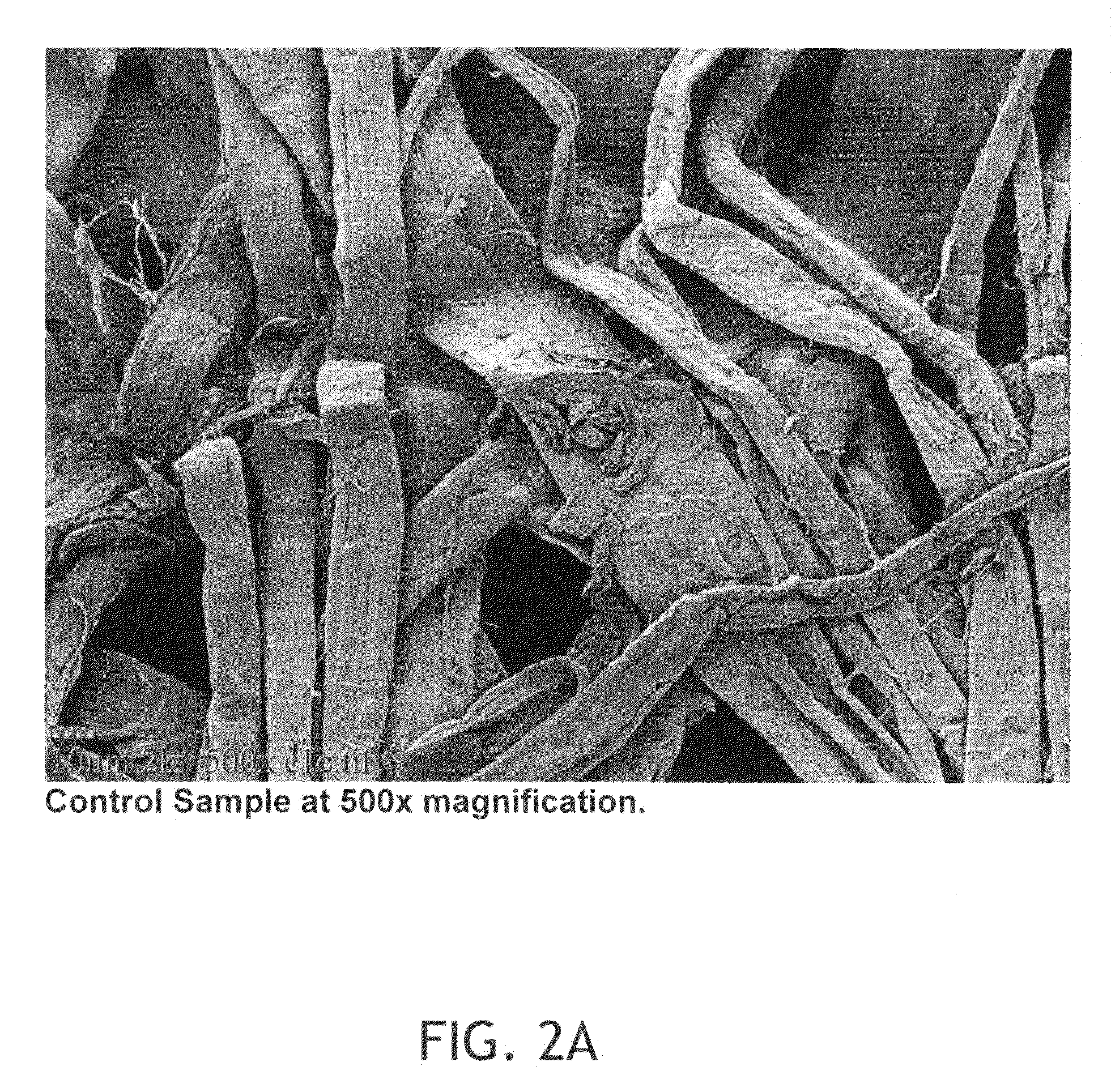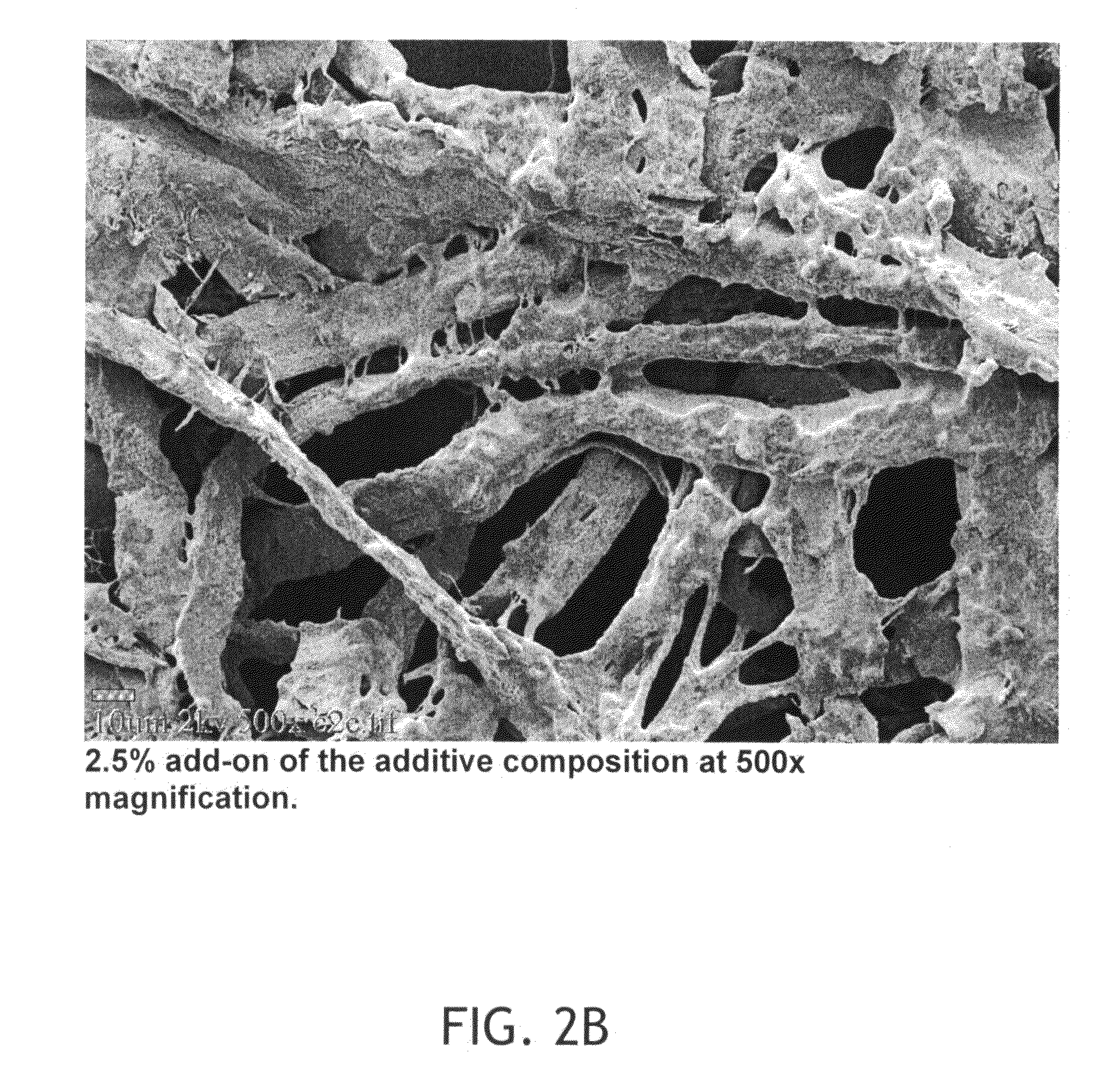Tissue products containing non-fibrous polymeric surface structures and a topically-applied softening composition
a non-fibrous polymer surface and composition technology, applied in the direction of printing, irregular area design, coatings without pigments, etc., can solve the problems of difficult production of high-strength tissue products, adverse effects on other characteristics of products, etc., and achieve good absorbency rate
- Summary
- Abstract
- Description
- Claims
- Application Information
AI Technical Summary
Benefits of technology
Problems solved by technology
Method used
Image
Examples
example 1
[0106]Tissue basesheet webs having non-fibrous polymeric surface structures were made generally according to the method illustrated in FIG. 1. In order to adhere the tissue web to a creping surface, which in this embodiment comprised a Yankee dryer, additive compositions made according to the present disclosure were sprayed onto the dryer prior to contacting the dryer with the web.
[0107]Initially, northern softwood kraft (NSWK) pulp was dispersed in a pulper for 30 minutes at 4% consistency at about 100 degrees F. Then, the NSWK pulp was transferred to a dump chest and subsequently diluted to approximately 3% consistency. Then, the NSWK pulp was refined at 0.6 to 4.5 hp-days / metric ton depending on the strength targets. The above softwood fibers were utilized as the inner strength layer in a 3-layer tissue structure. The NSWK layer contributed approximately 35% of the final sheet weight. Two kilograms KYMENE® 6500, available from Hercules, Incorporated, located in Wilmington, Del., ...
example 2
[0121]A 3-ply hard roll of Code 302 from Example 1 was post-treated with a softening composition in accordance with this invention, identified as silicone emulsion blend 6014A. Silicone emulsion blend 6014A had the following composition:
[0122]
Polysiloxane (AF-23)6% by weightGlycerin20%Fatty alkyl derivative (Tergitol 15S9)18%Antifoam0.5% Preservative0.07% WaterBalance to 100%Lactic acid was used to adjust to pH ~7
[0123]The 6014A formulation was printed on both outer sides of the 3-ply tissue web of via a simultaneous offset rotogravure printing process. The gravure rolls were electronically engraved, chrome-over-copper rolls supplied by Southern Graphics Systems, located at Louisville, Ky. The rolls had a line screen of 360 cells per lineal inch and a volume of 1.25 Billion Cubic Microns (BCM) per square inch of roll surface. The rubber backing offset applicator rolls had a 75 Shore A durometer cast polyurethane surface and were supplied by American Roller Company, located at Union...
example 3
[0130]Three soft rolls of single-ply, creped tissue Code US-3 were plied, calendered, crimped, post-treated with silicone emulsion blend 6014A (softening composition), slit, and rewound so that both creped sides were on the outside of the 3-ply structure. The composition of the 6014A formulation is shown in Example 2. The 3-ply sheet was calendered between two steel rolls to a 3-ply target caliper of 280 microns. Mechanical crimping on the edges of the structure held the plies together. The 6014A formulation was printed on both outer sides of the 3-ply tissue web via a simultaneous offset rotogravure printing process. The gravure rolls were electronically engraved, chrome-over-copper rolls supplied by Southern Graphics Systems, located at Louisville, Ky. The rolls had a line screen of 360 cells per lineal inch and a volume of 1.47 Billion Cubic Microns (BCM) per square inch of roll surface on one side and 1.6 BCM Billion Cubic Microns (BCM) per square inch of roll surface on the oth...
PUM
| Property | Measurement | Unit |
|---|---|---|
| temperature | aaaaa | aaaaa |
| temperature | aaaaa | aaaaa |
| temperature | aaaaa | aaaaa |
Abstract
Description
Claims
Application Information
 Login to View More
Login to View More - R&D
- Intellectual Property
- Life Sciences
- Materials
- Tech Scout
- Unparalleled Data Quality
- Higher Quality Content
- 60% Fewer Hallucinations
Browse by: Latest US Patents, China's latest patents, Technical Efficacy Thesaurus, Application Domain, Technology Topic, Popular Technical Reports.
© 2025 PatSnap. All rights reserved.Legal|Privacy policy|Modern Slavery Act Transparency Statement|Sitemap|About US| Contact US: help@patsnap.com



